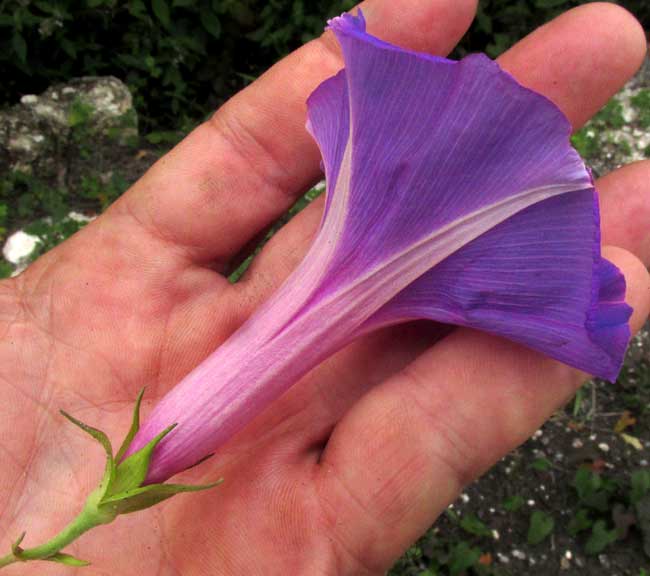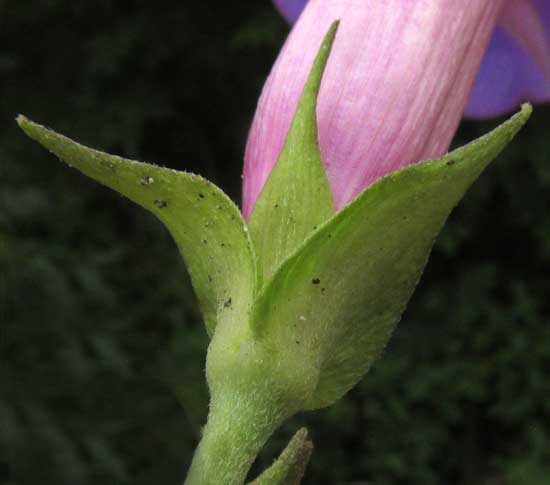Excerpts from Jim Conrad's
Naturalist Newsletter
from the August 9, 2018 Newsletter with notes from a camping trip in early July to southeastern Campeche state, MÉXICO
BLUE MORNING-GLORY
During my recent camping trip to southwestern Campeche state, on July 4th between Becán and Xpujil on the highway between Chetumal and Escárcega, along the roadside there appeared a car-size mass of overlapping morning-glory vine stems bearing 3½in long (9cm), bluish-purple-to-pink flowers, and leaves that sometimes were heart shaped and other times deeply 3-lobed, as shown below:

The pink item at the photograph's top is an old corolla fallen from its calyx. This shows that freshly opened blossoms are bluish but turn pink as they age.
We've already identified 15 morning-glory species here in the Yucatan, which you can browse at www.backyardnature.net/yucatan/yuc-vine.htm#o
Of those 15 species, several bear violet/purple/pink flowers and several produce deeply 3-lobed leaves, but that morning between Becán and Xpujil I stood awhile thinking that this combination of such large, blue flowers and 3-lobed leaves seemed like something new to me. Because so many morning-glory species exist -- 85 species in the Morning Glory Family, the Convolvulaceae, just for Veracruz state -- I knew that identifying this vine might be a challenge -- that eventually I'd need to "do the botany," so pictures of the vine's main field marks were taken. First of all, a side look at a flower showing a corolla pink at the base and bluish-purple at the top, is shown below:

In nearby Veracruz state, where Andrew McDonald published a study on the Morning-glory Family in 1993, the 85 species were distributed among eleven genera. To distinguish the genera, among the most important features are the number and configuration of the blossoms' styles and stamens, and stigma shape. Below, you can see that our flowers bore five stamens of different lengths, had hairy filament bases, and that the single style was topped with a spherical stigma:

These are features of the genus Ipomoea, which is bad news for identifiers, because over half of the Morning Glory Family's species belong to that genus. We've already identified ten Ipomoea species in the Yucatan. In this genus the calyx's sepals do interesting things, so a good shot of the sepals is shown below:

The sepals of some Ipomoea species are hairless, while others bear long, stiff hairs. Our vine's sepals are hairy with short, soft, lying-down hair -- they're "appressed pilose."
All these features led to IPOMOEA INDICA, in English often known as the Blue Morning-glory, though that name is shared with several other blue-flowered species. Despite its species name indicating that it's from India, it's native to South America. However, it's both cultivated and "gone wild" throughout the entire planet's tropics. The species is variable in certain of its features. For example, at higher elevations it produces tightly grouped flowers and the sepals are relatively slender, while in the lowlands where we were the flowers are more loosely arranged and the sepals are broader. This is a perennial vine that can live for 25 years or so.